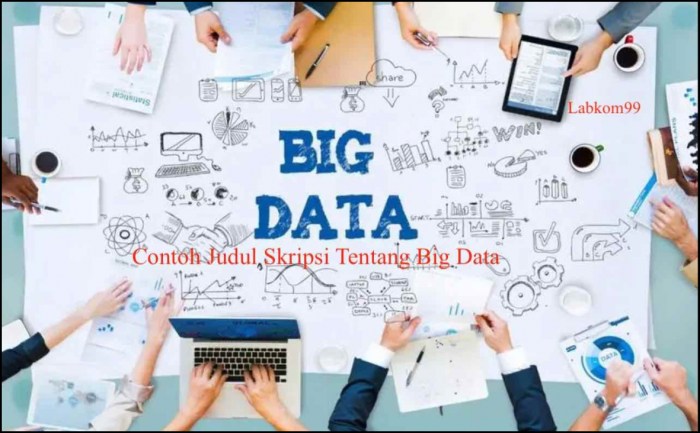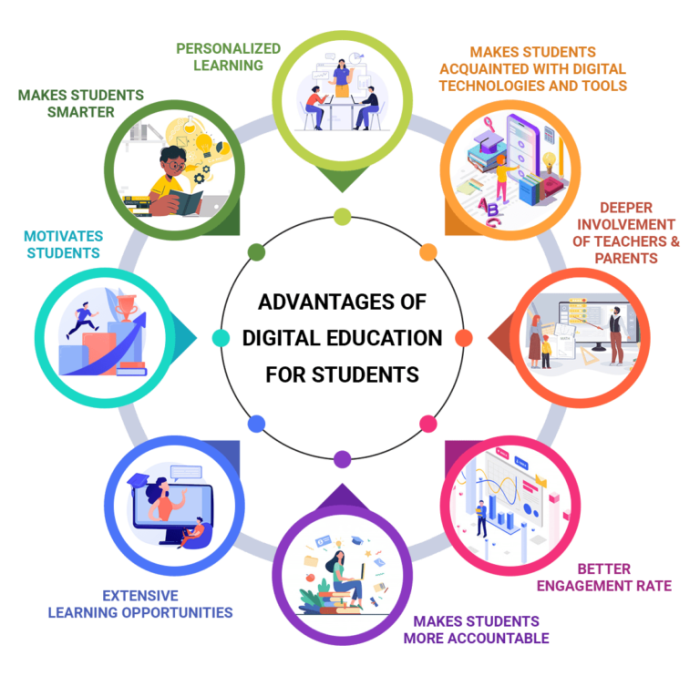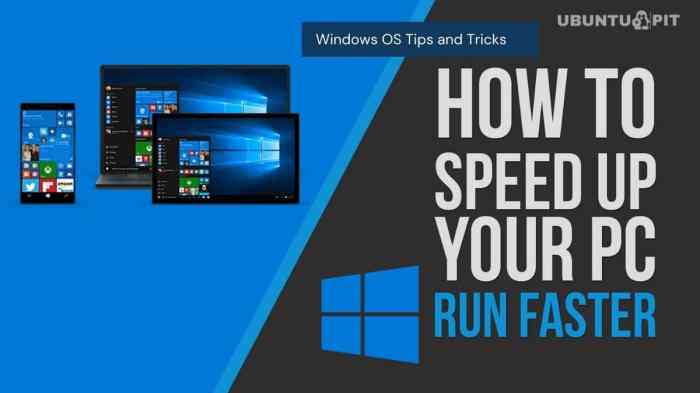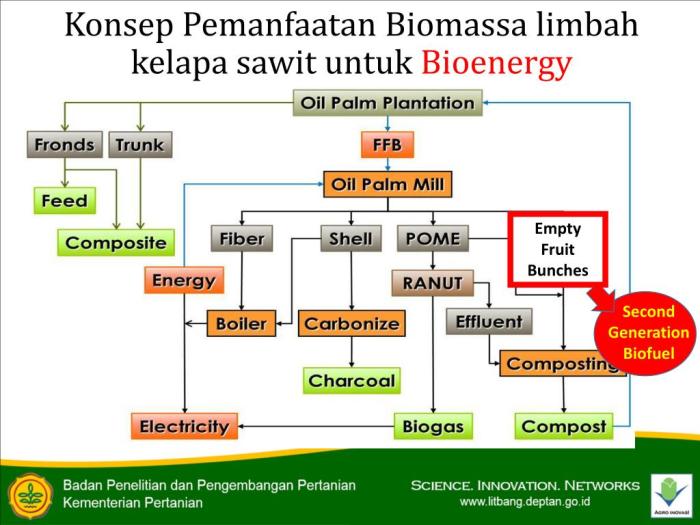Pemanfaatan Teknologi Big Data Dalam Analisis Pola Belajar Siswa

“Pemanfaatan Teknologi Big Data dalam Analisis Pola Belajar Siswa”— itu judulnya, bro! Bayangkan, semua data belajarmu—nilai ujian, tugas, waktu online—di-scan, dianalisa, dan hasilnya? Rahasia sukses belajarmu terungkap! Big data bukan cuma soal angka-angka, tapi tentang nge-unlock potensi belajarmu, menemukan gaya belajar terbaikmu, dan ngebantu guru bikin pembelajaran makin kece.
Ini bukan soal mata-mata, tapi soal membuat belajar jadi lebih efektif dan asyik!
Dengan teknologi big data, kita bisa melacak pola belajar siswa secara detail. Misalnya, kita bisa lihat siswa mana yang lebih suka belajar malam, siswa mana yang lebih cepat memahami materi lewat video, atau siswa mana yang butuh bantuan ekstra di bidang tertentu.
Informasi ini bisa digunakan untuk personalisasi pembelajaran, sehingga setiap siswa bisa belajar dengan cara yang paling efektif bagi dirinya. Selain itu, big data juga bisa membantu mengidentifikasi faktor-faktor yang mempengaruhi prestasi belajar, baik faktor internal (seperti motivasi dan minat belajar) maupun faktor eksternal (seperti lingkungan keluarga dan dukungan teman).
Dengan begitu, guru bisa memberikan intervensi yang tepat sasaran untuk meningkatkan prestasi belajar siswa.
Pengertian Big Data dalam Konteks Pendidikan
Yo, peeps! Big Data isn’t just some tech buzzword; it’s a total game-changer, especially in education. Think of it as this massive ocean of information about students, their learning styles, and how they interact with educational materials. We’re talking seriously HUGE amounts of data – way more than traditional methods can handle.
This data can be mined for insights to level up the learning experience for everyone.
Basically, Big Data in education uses advanced analytics to uncover patterns and trends in student learning that would be impossible to spot with traditional methods. It’s like having a super-powered microscope for your classroom, revealing hidden gems about how students learn best and where they might be struggling.
This allows educators to personalize learning experiences and improve outcomes significantly.
Contoh Data Pendidikan yang Termasuk Big Data
Okay, so what kind of data are we talking about? Think of it like this: everything digital related to a student’s learning journey. We’re not just talking test scores, dude. This includes a whole lotta info, like:
- Learning Management System (LMS) data:Assignments submitted, time spent on each module, quiz scores – the whole shebang. It’s like a detailed history of each student’s online learning activity.
- Student response systems (SRS) data:Real-time feedback from polls, quizzes, and interactive activities. This gives instant insights into student understanding during lessons.
- Social media interactions:While requiring careful ethical considerations, analyzing relevant social media posts can provide insight into students’ learning preferences and attitudes towards subjects.
- Video recordings of lectures and discussions:Facial recognition and sentiment analysis can reveal student engagement levels throughout lessons.
- Educational apps and game data:Tracking student progress and identifying areas where they excel or struggle in different learning environments.
Manfaat Penerapan Big Data untuk Meningkatkan Kualitas Pembelajaran
The benefits of using Big Data in education are totally rad. Imagine having the power to:
- Personalize learning:Tailor lessons and assignments to individual student needs and learning styles, maximizing their potential.
- Early identification of at-risk students:Spot students who are struggling early on, allowing for timely intervention and support.
- Improve curriculum design:Analyze data to identify areas where the curriculum needs improvement and adjust accordingly.
- Optimize resource allocation:Direct resources where they’re needed most, ensuring that all students have access to the support they need.
- Enhance teacher effectiveness:Provide teachers with data-driven insights to improve their teaching methods and classroom management.
Tantangan dalam Pengumpulan dan Pengolahan Big Data Pendidikan
It’s not all sunshine and rainbows, though. There are some serious hurdles to overcome when dealing with Big Data in education:
- Data privacy and security:Protecting student data is paramount. Robust security measures are essential to prevent breaches and ensure compliance with regulations.
- Data integration:Combining data from various sources (LMS, SRS, etc.) can be complex and require sophisticated technology.
- Data interpretation:Analyzing vast amounts of data requires specialized skills and tools. Educators need training to understand and interpret the results effectively.
- Cost and infrastructure:Implementing Big Data solutions can be expensive, requiring significant investment in hardware, software, and personnel.
- Ethical considerations:Using student data responsibly and ethically is crucial. Clear guidelines and policies are necessary to ensure fairness and transparency.
Perbandingan Metode Analisis Data Tradisional dengan Metode Analisis Big Data
Let’s break down the differences between the old-school way and the new Big Data approach:
| Metode | Keunggulan | Kekurangan | Contoh Aplikasi |
|---|---|---|---|
| Analisis Data Tradisional | Mudah dipahami, relatif murah | Data terbatas, analisis manual memakan waktu, sulit untuk melihat tren besar | Menghitung rata-rata nilai ujian kelas |
| Analisis Big Data | Analisis data skala besar, identifikasi pola kompleks, prediksi yang lebih akurat | Membutuhkan keahlian khusus, biaya tinggi, privasi data menjadi perhatian | Mendeteksi siswa yang berisiko putus sekolah berdasarkan pola aktivitas online dan nilai ujian |
Analisis Pola Belajar Siswa Menggunakan Big Data
Yo, what’s up, future educators? Big data is totally blowing up the ed-tech scene, and it’s a game-changer for understanding how students learn. Forget those old-school methods – we’re diving deep into how massive datasets can reveal hidden patterns in student behavior, helping us personalize learning and boost academic success.
Think of it as having X-ray vision for student progress!
Penggunaan Big Data dalam Menganalisis Pola Belajar Siswa
Big data, dude, it’s like having a super-powered microscope for student learning. We’re talking massive datasets – think mountains of info on student activity, assignments, quizzes, and even their online behavior. By crunching all this data, we can spot trends that are practically invisible with traditional methods.
We can see which learning styles work best for different students, identify areas where they’re struggling, and even predict future academic performance. It’s all about personalized learning, making education way more effective.
Contoh Algoritma Analisis Pola Belajar
So, how do we actually analyze all this data? Enter machine learning algorithms! These algorithms are like super-smart detectives, sifting through the data to find patterns and insights. For example, clustering algorithms can group students with similar learning styles, while predictive algorithms can forecast their future performance based on past data.
Think of algorithms like k-means clustering, which groups similar data points together, revealing common learning patterns among students. Another example is regression analysis, which can help predict future performance based on factors like time spent studying or quiz scores.
These tools help educators tailor their teaching strategies for maximum impact.
Strategi Pengumpulan Data Siswa yang Relevan
Gathering the right data is key, right? We need a solid strategy to collect relevant information without overwhelming students or invading their privacy. This involves using a variety of methods, ensuring data integrity and respecting student confidentiality. Think about integrating data from learning management systems (LMS), online assessments, classroom response systems, and even social media interactions (with appropriate permissions, of course!).
The more diverse the data, the richer the insights we can uncover.
- LMS data: Track student activity, assignments submitted, and time spent on each module.
- Online assessments: Analyze student performance on quizzes and tests, identifying areas of strength and weakness.
- Classroom response systems: Gather real-time feedback on student understanding during lessons.
Jenis-Jenis Data untuk Analisis Pola Belajar Siswa
The data we collect needs to be diverse and comprehensive to paint a complete picture of student learning. We’re talking about a mix of quantitative and qualitative data, offering a holistic view of student progress. This includes:
- Quantitative data:Numbers! Think grades, test scores, time spent on assignments, frequency of logins to online learning platforms, and even the number of times a student seeks help from a teacher or tutor. This data is objective and easily measurable.
- Qualitative data:This is the juicy stuff – student feedback, comments on assignments, teacher observations, and even discussions in online forums. This data provides context and helps us understand the -why* behind the numbers.
Contoh Visualisasi Data Pola Belajar Siswa
Data visualization is where things get really interesting. Transforming raw data into clear, understandable visuals is crucial for making sense of it all. Imagine a heatmap showing student engagement across different modules – darker colors indicate higher engagement, revealing areas where students are thriving or struggling.
Or a line graph tracking individual student progress over time, showing how their understanding of a topic evolves. A bar chart comparing the average test scores of students using different learning strategies would also provide valuable insights. These visuals tell a story that’s way easier to understand than spreadsheets filled with numbers.
For example, a heatmap could show higher engagement (darker colors) in specific modules, suggesting a need for more resources or adjustments in other areas. A line graph could visually represent the learning curve of an individual student, showcasing their progress and identifying points where additional support might be beneficial.
A bar chart could effectively compare the average scores of students using various learning methods, facilitating data-driven decisions for instructional strategies.
Identifikasi Faktor-Faktor yang Mempengaruhi Pola Belajar
Yo, peeps! Let’s dive into how big data totally transforms how we understand how students learn. Forget the old-school methods; we’re talking serious data analysis to pinpoint what makes students tick – and what might be holding them back.
This isn’t just about grades; it’s about unlocking each student’s full potential, you know?
Big data analysis allows educators to move beyond simple averages and delve into the intricate tapestry of individual learning styles. By crunching massive datasets, we can uncover hidden patterns and identify the key factors that influence student success. Think of it as giving teachers X-ray vision into the learning process.
Faktor Internal yang Mempengaruhi Pola Belajar
This section breaks down the internal factors—the stuff happening -inside* the student—that shape their learning journey. We’re talking about the things that are inherent to the student themselves, not external pressures.
- Cognitive Abilities:A student’s natural aptitude for learning, their processing speed, and memory capacity all play a huge role. Big data can help identify students who might need extra support in specific areas.
- Learning Styles:Some students are visual learners, others are auditory, and some are kinesthetic. Analyzing data on student engagement with different learning materials can reveal preferred learning styles.
- Motivation and Self-Efficacy:A student’s belief in their ability to succeed (self-efficacy) and their overall motivation are super important. Big data can help identify students who are struggling with motivation, allowing for targeted interventions.
- Prior Knowledge and Experience:A student’s existing knowledge base significantly impacts their ability to grasp new concepts. Big data can help identify knowledge gaps and tailor instruction accordingly.
Faktor Eksternal yang Mempengaruhi Pola Belajar
Now, let’s flip the script and look at the external factors—the stuff happening -outside* the student—that can impact their learning. These are the environmental influences that shape their academic journey.
- Family Support:A supportive home environment can make a world of difference. Big data, while not directly measuring this, can indirectly identify students from potentially less supportive backgrounds based on other factors.
- Socioeconomic Status:Access to resources and opportunities can greatly affect a student’s ability to succeed. Big data can help identify students who may be facing socioeconomic challenges.
- Classroom Environment:The classroom atmosphere, teacher-student relationships, and overall teaching methods all play a significant role. Data on student engagement and classroom interactions can reveal areas for improvement.
- Peer Influence:The influence of friends and classmates can be both positive and negative. Big data can help identify students who might be negatively impacted by their peer group.
Prediksi Keberhasilan Belajar Siswa Menggunakan Big Data
Predictive analytics, a powerful tool within big data, can help anticipate a student’s academic success. By analyzing historical data—grades, attendance, engagement—alongside the internal and external factors we just discussed, educators can identify students at risk of falling behind and implement proactive interventions.
For example, a school might find that students with low engagement in online learning platforms and a history of missing assignments are more likely to struggle academically. This allows for early intervention, such as providing extra support or adjusting teaching methods.
Contoh Penerapan Analisis Big Data dalam Menangani Masalah Belajar Siswa
Let’s say a school uses a learning management system (LMS) that collects data on student activity. Through big data analysis, they discover that a group of students consistently struggle with math problems involving fractions. By examining other data points, they might also find that these students have lower scores on tests assessing basic arithmetic skills.
This pinpoints the root cause: a lack of foundational knowledge.
Armed with this insight, teachers can develop targeted interventions, such as providing extra tutoring in basic arithmetic or using different teaching methods to address the learning gap. This is a far cry from the one-size-fits-all approach of the past.
Big data allows for personalized learning experiences that cater to individual needs.
Penerapan Hasil Analisis Big Data dalam Pembelajaran

Yo, peeps! Big data ain’t just some tech buzzword; it’s a total game-changer for how we learn. Think of it as a super-powered microscope for your classroom, revealing hidden patterns in student performance. By analyzing this data, we can totally personalize learning, boost teaching effectiveness, and basically level up the whole educational experience.
Let’s dive into how we can make this happen.
Personalisasi Pembelajaran Berbasis Big Data
Imagine a learning experience totally tailored to -you*. That’s the power of personalized learning fueled by big data. By analyzing individual student data – like their strengths, weaknesses, learning styles, and pace – educators can create customized learning paths.
This means ditching the one-size-fits-all approach and embracing a more dynamic, engaging learning journey for every student.
- Adaptive Learning Platforms:These platforms adjust the difficulty and content based on a student’s real-time performance. If a student is crushing it, the platform throws tougher challenges their way. If they’re struggling, it provides extra support and simpler explanations.
- Personalized Learning Recommendations:Big data can identify specific learning resources – videos, articles, interactive exercises – that are most effective for each student, maximizing their learning potential.
- Targeted Support:Students who are falling behind can receive timely interventions and customized support based on their specific needs, preventing them from getting left in the dust.
Strategi Intervensi Pembelajaran yang Efektif, “Pemanfaatan Teknologi Big Data dalam Analisis Pola Belajar Siswa”
Big data isn’t just about identifying problems; it’s about solving them. By analyzing learning patterns, educators can pinpoint areas where students are struggling and develop targeted interventions. This proactive approach ensures that students get the help they need, when they need it, preventing learning gaps from widening.
- Early Warning Systems:Big data can identify students at risk of falling behind -before* they actually do, allowing for early intervention and preventing academic setbacks.
- Targeted Tutoring:Based on individual student needs, educators can assign specific tutors or provide access to targeted tutoring programs.
- Curriculum Adjustments:If big data reveals that a particular topic is causing widespread difficulty, educators can adjust the curriculum to address the issue and improve student understanding.
Meningkatkan Efektivitas Metode Pengajaran
Big data can provide invaluable insights into what teaching methods work best for different students and learning styles. This allows educators to refine their teaching strategies and optimize learning outcomes.
- Analyzing Engagement Metrics:Data on student engagement with different learning materials can help educators determine which methods are most effective and engaging for their students. For example, if students consistently perform better on quizzes after watching instructional videos, educators can incorporate more videos into their lessons.
- Identifying Effective Teaching Practices:By analyzing data across multiple classrooms and schools, educators can identify teaching practices that consistently lead to improved student outcomes. This data-driven approach can lead to better professional development and more effective teaching strategies.
Langkah-langkah Penerapan Analisis Big Data dalam Pembelajaran
Implementing big data analysis in education isn’t rocket science, but it does require a structured approach. Here’s a breakdown of the key steps.
- Data Collection:Gather relevant student data, including grades, attendance, engagement metrics, and feedback.
- Data Cleaning and Processing:Clean and organize the data to ensure accuracy and reliability.
- Data Analysis:Use appropriate analytical techniques to identify patterns and trends in student learning.
- Intervention and Improvement:Develop and implement targeted interventions based on the analysis.
- Evaluation and Iteration:Continuously monitor the effectiveness of interventions and adjust strategies as needed.
Rekomendasi Praktis untuk Pendidik
Data analysis is your secret weapon for creating a truly awesome learning experience. Don’t be afraid to experiment, adapt, and iterate based on the insights you gain. Remember, the goal is to personalize learning and empower students to reach their full potential. Stay flexible, stay curious, and keep leveling up your teaching game!
Etika dan Privasi Data dalam Analisis Pola Belajar

Yo, peeps! Big data’s totally rad for figuring out how students learn, but let’s be real – we gotta keep things on the DL about their personal info. Privacy is a major vibe, and messing with it is, like, a total buzzkill.
This section breaks down the ethical and privacy considerations when using big data to analyze student learning patterns. We’re talking serious stuff here – the kind that could land you in hot water if you’re not careful.
Isu Etika dan Privasi Data dalam Analisis Big Data Pendidikan
Analyzing student data using big data tools opens up a world of possibilities for improving education. However, this power comes with a huge responsibility to protect student privacy. Think of it like this: you wouldn’t want your personal info splashed all over the internet, right?
Same goes for students. We’re talking about sensitive data, like grades, learning styles, and even behavioral patterns. Using this data without proper safeguards is a major ethical breach, and could seriously damage a student’s reputation or even future opportunities.
It’s crucial to remember that students are not just data points; they are individuals with rights.
Langkah-langkah untuk Memastikan Keamanan dan Kerahasiaan Data Siswa
Keeping student data safe is paramount. It’s not just about following the rules; it’s about building trust. Think of it as keeping your locker combo secret – you wouldn’t want anyone snooping around, would you? Here’s how to lock down that data:
- Data Encryption:This is like putting a super-strong lock on your data. It scrambles the information so that only authorized people with the right key can access it.
- Access Control:Only authorized personnel, like teachers and administrators with a legitimate need, should have access. Think of it like a VIP-only club for data.
- Regular Security Audits:Regular checks are essential to identify and fix any vulnerabilities. It’s like a car tune-up – keeps everything running smoothly.
- Data Minimization:Only collect the data that’s absolutely necessary. No need to hoard info you don’t need. Think of it as decluttering your digital space.
- Anonymization and Pseudonymization:This involves removing or replacing identifying information to protect student privacy. It’s like using a nickname instead of your real name online.
Regulasi dan Pedoman yang Relevan Terkait Penggunaan Data Siswa
There are laws and guidelines designed to protect student data. These regulations vary by location, but the general idea is the same: keep student data safe and secure. Ignoring these rules is a major no-no. Think of it like traffic laws – you don’t want to get a ticket, right?
- FERPA (Family Educational Rights and Privacy Act):In the US, this act protects the privacy of student education records.
- GDPR (General Data Protection Regulation):In Europe, this regulation sets a high standard for data protection.
- COPPA (Children’s Online Privacy Protection Act):This act specifically addresses the online privacy of children.
It’s crucial to understand and comply with all relevant regulations in your specific jurisdiction. This ensures that you’re playing by the rules and keeping student data safe.
Menjaga Keseimbangan antara Pemanfaatan Data untuk Peningkatan Pembelajaran dan Perlindungan Privasi Siswa
Finding the sweet spot between using data to improve learning and protecting student privacy is a tightrope walk. It’s about finding the balance between innovation and responsibility. Think of it as a balancing act – you need both sides to stay upright.
Transparency and open communication with students and parents are key to building trust and ensuring ethical data practices.
Praktik Terbaik untuk Memastikan Etika dan Privasi Data dalam Analisis Big Data Pendidikan
Here’s the lowdown on best practices for keeping student data safe while still using it to improve learning:
- Informed Consent:Always get permission before collecting and using student data. It’s like asking before borrowing someone’s pen.
- Data Security Training:Educate everyone who handles student data on security best practices. Think of it as a safety briefing before a big project.
- Regular Privacy Impact Assessments:Regularly assess the potential risks to student privacy. It’s like a health check for your data.
- Transparency and Accountability:Be upfront about how student data is being used and who has access to it. Openness builds trust.
- Continuous Monitoring and Improvement:Keep up with the latest security threats and best practices. It’s like staying updated on the latest tech gadgets.
Ringkasan Penutup: “Pemanfaatan Teknologi Big Data Dalam Analisis Pola Belajar Siswa”
So, intinya, memanfaatkan big data untuk analisis pola belajar siswa itu keren banget, bro! Bukan cuma soal nilai naik, tapi tentang menciptakan pengalaman belajar yang lebih personal, efektif, dan—yang terpenting—lebih asik! Bayangkan, belajar jadi kayak main game, tapi hadiahnya adalah kesuksesan akademikmu.
Dengan memahami pola belajarmu, kamu bisa mencapai potensi maksimalmu. It’s a win-win situation!
FAQ dan Panduan
Apakah analisis big data dapat menggantikan peran guru?
Tidak. Analisis big data berperan sebagai alat bantu guru untuk memahami siswa lebih baik, bukan untuk menggantikan peran guru dalam mengajar dan membimbing siswa.
Bagaimana memastikan keamanan data siswa dalam analisis big data?
Keamanan data harus diutamakan dengan menerapkan enkripsi data, akses terbatas, dan kepatuhan pada regulasi privasi data.
Apakah semua sekolah mampu menerapkan analisis big data?
Tidak semua sekolah memiliki sumber daya dan infrastruktur yang memadai. Penerapannya bertahap dan disesuaikan dengan kemampuan masing-masing sekolah.
Apa yang terjadi jika terjadi kesalahan dalam analisis big data?
Kesalahan analisis bisa berdampak pada kesimpulan yang salah. Validasi data dan interpretasi hasil yang hati-hati sangat penting.



